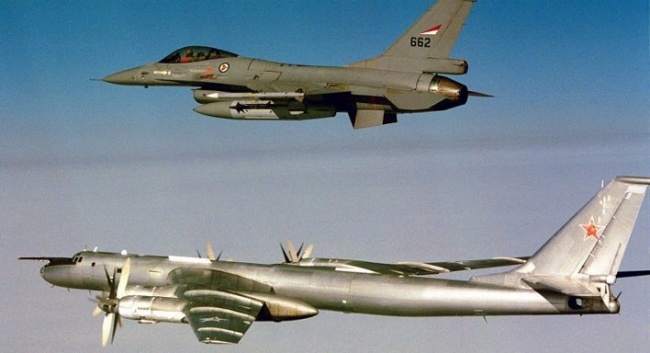Over the past year or so (less than a year, in fact), Russian troops have conducted a series of major military exercises, many of which were unplanned and even unexpected. In 2014 alone, the Ministry of Defence of the Russian Federation conducted more than 3000 training courses for its workforce. Western (and some not so friendly Eastern) media outlets were quick to connect the exercises to a response to the military manoeuvres being carried out by the United States and the Eastern European members of NATO along the Russian border.
Over the past year or so (less than a year, in fact), Russian troops have conducted a series of major military exercises, many of which were unplanned and even unexpected. In 2014 alone, the Ministry of Defence of the Russian Federation conducted more than 3000 training courses for its workforce. Western (and some not so friendly Eastern) media outlets were quick to connect the exercises to a response to the military manoeuvres being carried out by the United States and the Eastern European members of NATO along the Russian border.
Over the past year or so (less than a year, in fact), Russian troops have conducted a series of major military exercises, many of which were unplanned and even unexpected. In 2014 alone, the Ministry of Defence of the Russian Federation conducted more than 3000 training courses for its workforce.
Any time when more than two tanks or aircraft were involved in Russian military exercises, neighbouring countries started suffering anxiety attacks that soon turned into all-out panic. Combat aircraft were also involved in exercises far beyond Russian borders. The Internet is full of clips showing Russian planes being “intercepted” in the vicinity of peaceful NATO skies.
On March 12, 2015, large-scale air defence exercises began in the Eastern Military District. The drills are designed for the Russian Air Force to fine tune its strategies for overcoming and destroying enemy air defence systems. Exercises in the Stavropol Region are being carried out by the Southern Military District fleet, while the Volgograd Region is hosting exercises organized by artillery units. The Caspian Flotilla Naval Infantry has begun manoeuvres in Dagestan and the Astrakhan Region, and air defence exercises have commenced in the Kaliningrad Region.
In accordance with the March 16 decree of the Supreme Commander-in-Chief of the Armed Forces of the Russian Federation Vladimir Putin, the Northern Fleet has been placed on full combat readiness along with some compounds of the Western Military District and selected airborne troop divisions. The exercises will assess the capabilities of deploying forces from Russia’s central regions when performing tasks in difficult weather conditions. The main task is to shore up security in Russia’s Arctic region. Around 38,000 military personnel, 3,360 pieces of military equipment, 41 ships, 15 submarines and 110 planes and helicopters took part in the exercises.
Western (and some not so friendly Eastern) media outlets were quick to connect the exercises to a response to the military manoeuvres being carried out by the United States and the Eastern European members of NATO along the Russian border. For example, according to CNN, Norway is executing its largest military exercises in years involving some 5000 military personnel, in the border regions of Lakselv and Finnmark. In Poland, the U.S. Military is conducting a training exercise involving a Patriot missile battery. The U.S. military “convoy of solidarity” will soon set off on a tour of Europe: Stryker armoured fighting vehicles will be joined by Fairchild Republic A-10 Thunderbolt IIs in Germany, while hundreds of tanks will be sent from the state of Georgia to Latvia, along with 3000 soldiers. Joint naval exercises with the participation of the United States, Romania, Bulgaria and Turkey are set to be held on the Black Sea.
It is, thus, quite obvious that our partners are stepping up their military plans in a big way. However, it is perhaps unwise to draw a direct link between Western activities on the one hand and Russian military exercises on the other. The Russian army has spent great efforts to modernize and reform itself over the past few years. Naturally, more time needs to be spent on training – learning how to operate new military equipment and perform unfamiliar tasks. Our neighbours’ agitation can only be justified in one case: if they are hatching plans to launch a direct and immediate attack on Russia’s national security. And if this happens, the Military Doctrine of the Russian Federation allows for the use of nuclear weapons as a response.
According to the 2010 Strategic Concept for the Defence and Security of the Members of the North Atlantic Treaty Organisation, the main threats to security include the proliferation of ballistic missiles and nuclear weapons, the spread of terrorism, the threat of cyber-attacks and fundamental environmental problems.
NATO seeks to strengthen international security through cooperation. Greater efforts will be spent in this regard in terms of arms control, disarmament and non-proliferation, with an emphasis on an open door policy in relations between all the European nations and significantly deepening partner relations in the broadest sense of the word.
As we can see, there is no contradiction “on paper” with the foreign policy goals and objectives of the Russian Federation. On the contrary, our partners should be happy that they have such a responsible country for a neighbour, one that possesses a powerful and trained armed forces capable of countering threats effectively.






